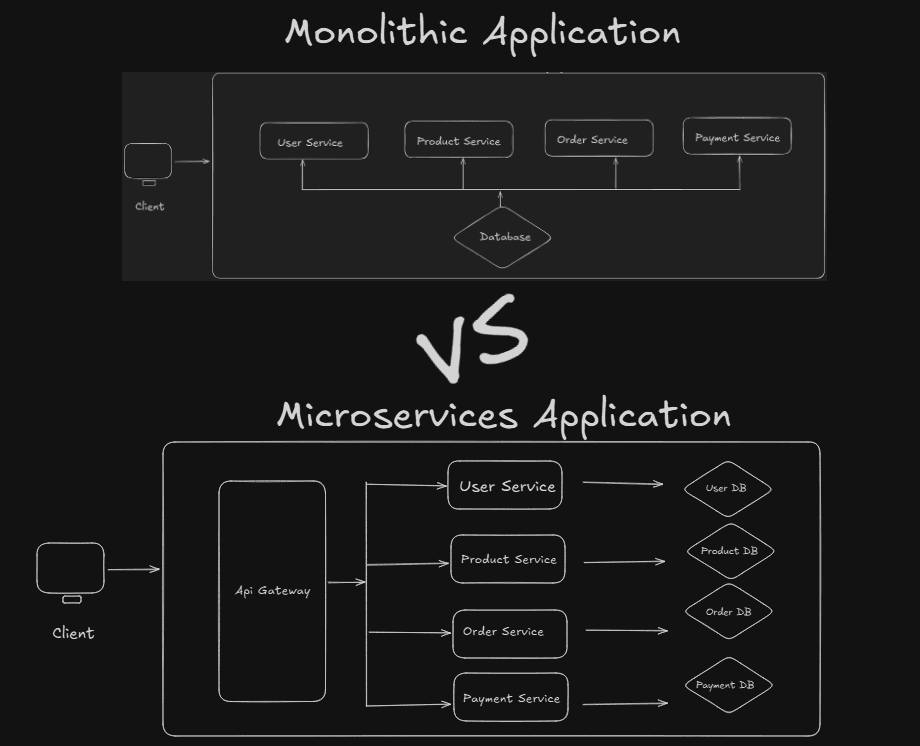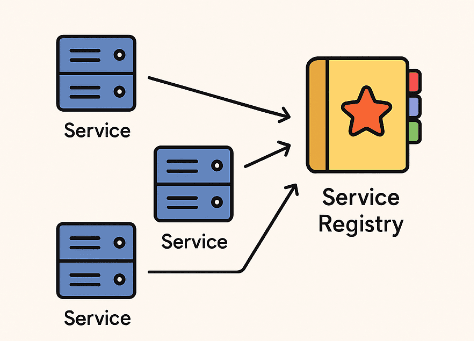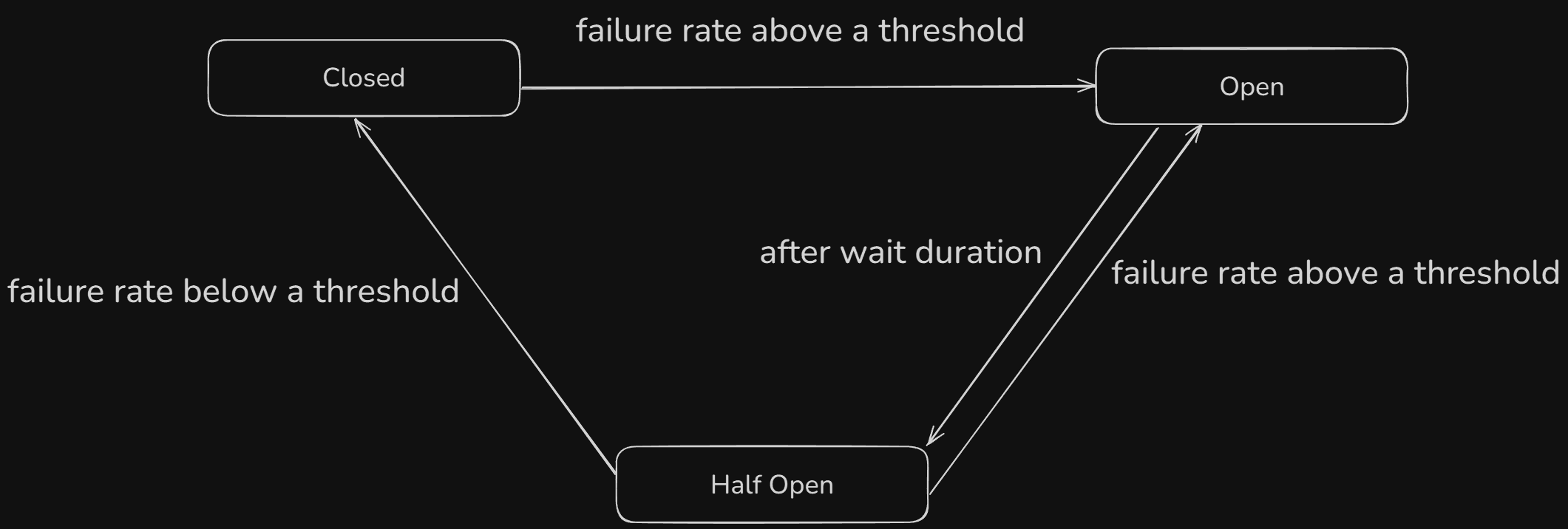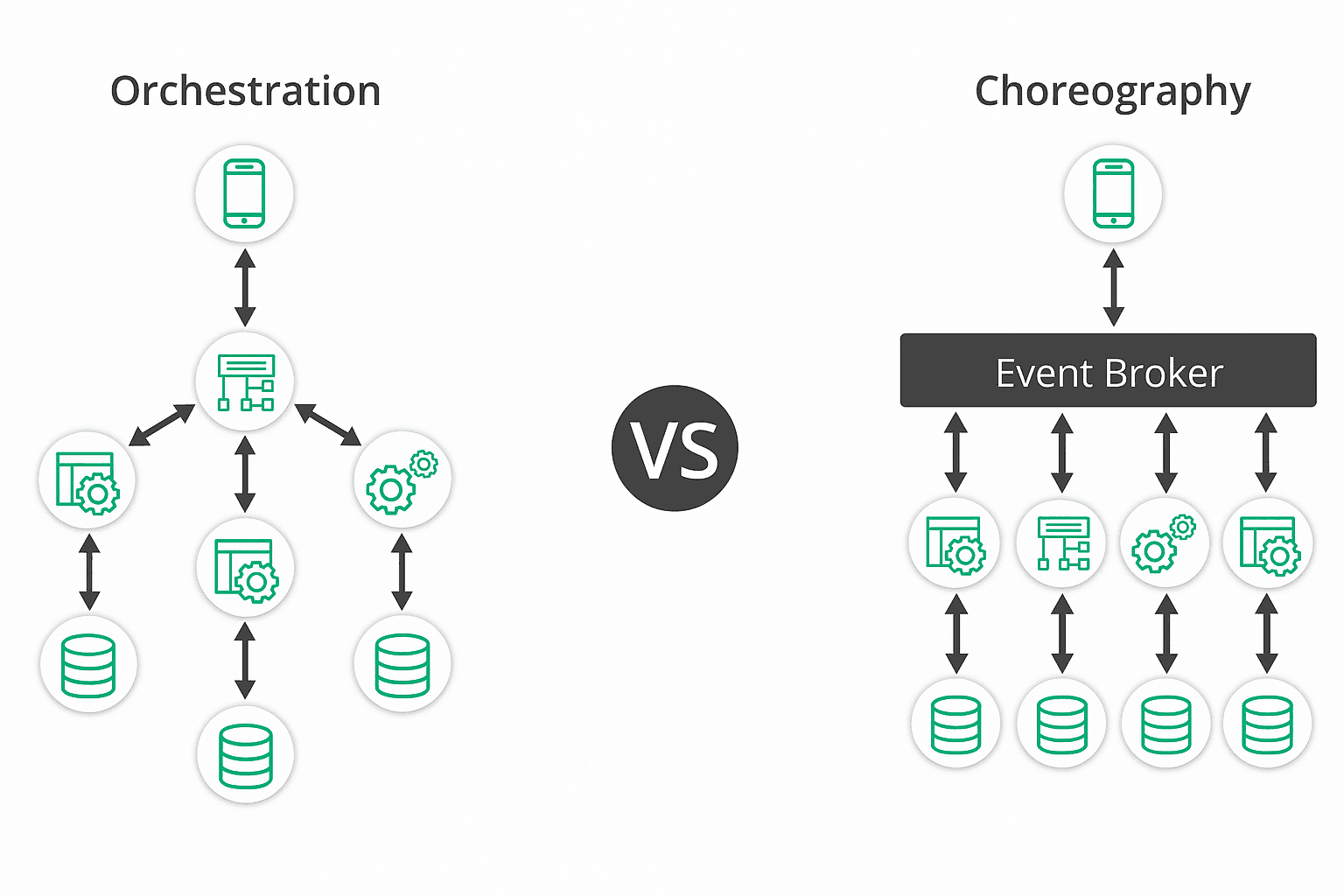
Top 20 Microservice interview questions for Advanced Spring Boot Developers in 2025
This blog covers the top 20 microservices interview questions, providing clear explanations and examples to help you prepare for your Spring Boot interviews. Topics range from the fundamentals of microservices architecture to advanced concepts like service discovery, API gateways, and distributed tracing.
Santosh Mane
January 31, 2025
12 min read
If you’re preparing for spring boot interviews, chances are you’ll come across some questions about microservices. They’re a big deal in tech right now, and I can tell you from experience, they’re definitely something you want to have a handle on. I’ve worked with Spring Boot enough to know how tricky these concepts can feel at first, so I decided to put together a list of the top 20 microservices interview questions I’ve seen asked. I’ll keep things simple, with clear examples to make sure you really get it. That way, you’ll be able to walk into your interview feeling ready and confident. Let’s get into it!
1. What is a microservice? How is it different from a monolith?#
A microservice is a small, independently deployable service that handles one specific job ike managing user profiles or processing payments and chats with others via APIs or messages. It’s like a team of specialists working together.
Difference from a monolith: A monolith is one huge app where everything (UI, logic, database) is tangled up, making it tough to scale or update. Microservices break that into tiny, separate pieces, so each can grow or change on its own without messing with the others. It’s all about flexibility and speed!

2. How do microservices communicate with each other?#
Microservices usually talk through REST APIs over HTTP for quick requests, or message queues like RabbitMQ or Kafka for async tasks—like sending a confirmation email. Sometimes, they use gRPC for fast, binary communication.
It’s like sending letters (REST), passing notes (messaging), or using a walkie-talkie (gRPC)—each method fits different needs, and you add security (like SSL) to keep it safe.
3. What is service discovery, and why do we need it?#
Service discovery is a mechanism that allows microservices to automatically register themselves and locate other services in the system.
Service discovery is like a digital address book. With tons of microservices popping up or moving around, it helps them find each other’s current IP and port without you manually updating lists.
We need it because hardcoding addresses in a dynamic cloud setup is a headache—tools like Eureka or Consul make it automatic and stress-free.

4. What is the role of Spring Cloud in microservices?#
Spring Cloud is a set of tools and frameworks built on top of Spring Boot, designed specifically to solve common challenges in building and managing distributed microservices systems. These challenges include configuration management, service discovery, load balancing, routing, fault tolerance, and more.
How is Spring Cloud helpful :
When you move from a monolithic application to microservices, things get complicated—services need to find each other, handle failure gracefully, share configuration, and route requests properly. Spring Cloud simplifies these problems by offering out-of-the-box solutions, so developers don’t have to reinvent the wheel.
Role of Spring Cloud in microservices
Spring Cloud is like your trusty sidekick for microservices with Spring Boot. It brings tools like:
- Eureka for service discovery
- Spring Cloud Config for centralized configuration
- Spring Cloud Gateway for intelligent routing
- Resilience4j for fault tolerance and circuit breaking
- Sleuth + Zipkin for distributed tracing and monitoring
It is like your trusty sidekick for microservices with Spring Boot. It brings tools like Eureka for finding services, Spring Cloud Gateway for routing, Spring Cloud Config for settings, and Resilience4j for circuit breaking.
It’s a one-stop shop that speeds up building robust, scalable microservices—making your life a lot easier!
5. How do you handle configuration in microservices?#
In a microservices architecture, each service is independent and often runs in different environments (dev, test, staging, prod). Hardcoding configuration like database URLs, API keys, or feature flags into code leads to security risks and poor scalability. That's why externalizing and managing configuration properly is essential.
Ways to manage configuration in microservices:
- Spring Cloud Config Server is commonly used to handle configuration centrally. It allows you to store all your service configs in one place (like a Git repo), and microservices can fetch their settings at startup.
- You can also define environment-specific properties using profiles in
application.ymlorapplication-dev.yml,application-prod.yml, etc. - For sensitive values like passwords or secret keys, it’s a good practice to use environment variables, or integrate with vaults (e.g., HashiCorp Vault, AWS Secrets Manager).
- When configs change, use the
/actuator/refreshendpoint (with Spring Cloud Bus if needed) to update live services without restarting them.
6. What is an API Gateway, and why is it important?#
An API Gateway acts as the single entry point for all client requests to your microservices system. Instead of calling each service directly, clients send requests to the gateway, which then routes them to the appropriate backend service.
Why is it important?
In a microservices architecture, exposing each service directly to clients leads to:
- Complex client-side logic
- Security vulnerabilities
- Tight coupling between clients and services
Key responsibilities of an API Gateway:
- Routing – Directs client requests to the appropriate microservice
- Security – Handles authentication/authorization (e.g., JWT validation)
- Rate limiting – Prevents abuse with throttling or quotas
- Load balancing – Distributes traffic efficiently
- Logging & Monitoring – Captures request/response data
- Request transformation – Modifies headers, payloads, or paths before forwarding
- Hiding internal structure – Keeps service URLs hidden from the public
7. How do you implement security in microservices?#
Security in microservices is layered—you need to protect services from unauthorized access while still enabling smooth communication between them.
Here’s how I usually implement it:
1. Authentication with JWT#
I use Spring Security with JWT (JSON Web Tokens) to authenticate users. After a successful login, the authentication server generates a JWT, which clients send in the Authorization header for every request.
Example:
Client → API Gateway → Auth Server → Generates JWT
2. Authorization per service (Role-based Access)#
Each microservice has its own Spring Security config, so I can define what roles can access which endpoints.
3. Secure Gateway with Authentication Check#
The API Gateway is the first point of contact—it validates the JWT before forwarding the request. If the token is invalid, the request is blocked.
4. Other Best Practices#
it is essential to enable HTTPS to ensure all communication between clients and services is encrypted and secure. Sensitive information like secret keys, API tokens, or credentials should never be hardcoded; instead, they should be managed using environment variables or integrated secrets managers like AWS Secrets Manager or HashiCorp Vault. To maintain proper isolation and security between services, avoid passing client JWTs directly—use internal service credentials for inter-service communication when necessary. Additionally, always implement a secure refresh token mechanism to allow users to maintain their session without needing to log in repeatedly, while still keeping the system protected from token reuse or theft.
8. What is circuit breaking, and how does it help?#
A Circuit Breaker prevents cascading failures in Microservices by temporarily stopping calls to a failing service. If failures exceed a threshold, it "opens," blocking requests. After a cooldown, it moves to a half-open state to test if recovery is possible. If successful, it closes and resumes normal operation.

Example:
If the "Payments" service is down, the "Orders" service can skip payment processing and notify the user instead of waiting indefinitely.
Implementation: Can be implemented using Resilience4j with Spring Boot to configure failure thresholds and recovery log
9. Explain the role of Eureka in a Spring Boot microservice architecture.#
Eureka is my go-to service registry. Services check in with it to say they’re alive, and others look it up to find them—no need for hardcoded URLs.
It’s dynamic and flexible, making it easy to scale or replace services on the fly—love that adaptability!
10. How can you achieve load balancing in microservices?#
To distribute traffic evenly across multiple instances of a service, I use Spring Cloud LoadBalancer, or in older setups, Netflix Ribbon. These tools automatically pick the best available instance using strategies like round-robin or random selection.
Think of it like a smart waiter who guides incoming guests (requests) to available tables (service instances), ensuring that no single table gets overcrowded. This helps improve performance, avoids bottlenecks, and keeps your services healthy under load.
11. What are some common challenges in a microservices architecture?#
Working with microservices brings flexibility, but it also introduces a set of challenges. Some key ones I’ve faced include:
- Maintaining data consistency across services
- Managing inter-service dependencies
- Dealing with network latency and timeouts
- Handling distributed logging and monitoring
- Coordinating deployment and versioning across teams
It’s a bit like herding cats—every service wants to do its own thing. But with the help of tools like centralized logging, distributed tracing, and container orchestration, it becomes manageable and even enjoyable.
12. How do you manage logging across multiple microservices?#
To keep logs organized and useful across services, I use SLF4J with Logback for structured logging, and then forward logs to a centralized system like the ELK Stack (Elasticsearch, Logstash, Kibana) or Graylog.
I also add correlation IDs to each request, which makes it easy to trace a single transaction as it flows across multiple services.
It’s like keeping a shared journal, where every service writes its part of the story—making it far easier to debug and understand what's happening end-to-end.
13. What is distributed tracing?#
Distributed tracing helps track a single request as it flows through multiple microservices. It captures the full journey—including which services were called, how long each step took, and where any delays or errors occurred.
Tools like Zipkin and Jaeger make this visual by showing timelines and service maps.
It’s like having a GPS for your backend—you can instantly spot where a request slowed down or failed, which is super helpful for debugging and performance tuning.
14. How do microservices share data?#
Microservices don’t share a common database—each one manages its own data to maintain independence and loose coupling. When they need to exchange information, they communicate through REST APIs, GraphQL, or message queues like RabbitMQ or Kafka.
It’s kind of like each microservice keeps its own private notebook, but when needed, it passes a note to another one to share updates. This approach keeps services isolated yet connected.
15. What is eventual consistency?#
Eventual consistency means that when data is updated in one service, it may take some time before that change is reflected across other services. Instead of syncing immediately, the system eventually becomes consistent, usually through event-driven communication.
For example, when an order is placed, the inventory service may update a little later through an event.
It’s a trade-off between speed and accuracy—but works well when real-time syncing isn’t critical, and system availability is more important.
16. How do you test microservices?#
I use a multi-layered testing approach to ensure my microservices are reliable:
- Unit tests with JUnit and Mockito to test business logic in isolation
- Integration tests to verify communication with components like databases or other services
- Contract tests using Spring Cloud Contract to ensure services agree on the request/response formats
- End-to-end (E2E) tests with tools like Postman, RestAssured, or Selenium to simulate real-world usage
It’s like testing a recipe at every step—from ingredients to the final dish—making sure the whole meal turns out just right!
17. What is a saga pattern in microservices?#
The saga pattern is a way to manage distributed transactions across multiple microservices. Instead of relying on a traditional database transaction, it breaks the process into smaller steps, where each service performs a local transaction and publishes an event.
If something goes wrong mid-way (like payment failing after booking), it triggers compensating actions (like canceling the booking) to keep the system consistent.
There are two ways to implement sagas:
- Choreography – services react to each other’s events (no central brain)
- Orchestration – a central coordinator tells each service what to do next
It’s like booking a trip: if the hotel’s unavailable, you cancel the flight and refund the payment—graceful rollback in action.
18. How do you version your APIs in microservices?#
API versioning helps you update services without breaking existing clients. I usually version using the URL path (e.g., /v1/users) or via custom request headers.
Example using URL versioning:
This ensures backward compatibility—so clients using older versions still work while newer ones enjoy the updated features.
It’s like updating a cookbook with new versions of recipes, but still keeping the originals handy for loyal fans.
19. What is the difference between orchestration and choreography in microservices?#
When microservices need to collaborate on a business process—like order placement, payment, and shipping—they can coordinate in two styles: orchestration and choreography.
- Orchestration means one service (or a central coordinator) takes charge, telling each microservice what to do and when—like a conductor leading an orchestra. This approach is easier to manage in complex workflows but introduces tight control.
- Choreography, on the other hand, lets each service act independently by listening to and reacting to events. No central authority—just services dancing in sync to the beat of messages. It’s more loosely coupled, like a jazz band improvising together.

I choose between the two depending on complexity: Orchestration offers more control, while choreography gives more flexibility and scalability. Both have their charm—and knowing when to use which is key to building elegant distributed systems.
20. How do you deploy microservices in production?#
Deploying microservices at scale is all about automation, containerization, and observability.
I start by using Docker to package each microservice with its dependencies, ensuring it runs the same everywhere—from dev to prod. Then, I rely on Kubernetes to orchestrate these containers: it handles scaling, service discovery, self-healing, and rolling updates like a pro.
To automate the whole delivery process, I use CI/CD pipelines with tools like Jenkins, GitHub Actions, or GitLab CI, which make testing and deployment seamless. For observability, I integrate Prometheus and Grafana for metrics, and tools like ELK or Loki for centralized logging.
It’s like managing a fleet of food trucks—each running independently, but all part of a coordinated system that scales smoothly, stays updated, and gets monitored in real-time.
Conclusion#
Finally we have covered a lot for from the fundamentals of microservices to advanced deployment and design patterns. These 20 microservice questions are your key to nailing that 2025 interview as an advanced Spring Boot developer. Also these interview questions are more than just Q&A, they're your cheat sheet to mastering microservices in Spring Boot. Whether you're preparing for a 2025 job interview, building real-world projects, or improving your backend architecture, this guide gives you the clarity and confidence about microservices.
Want to Master Spring Boot and Land Your Dream Job?
Struggling with coding interviews? Learn Data Structures & Algorithms (DSA) with our expert-led course. Build strong problem-solving skills, write optimized code, and crack top tech interviews with ease
Learn more

